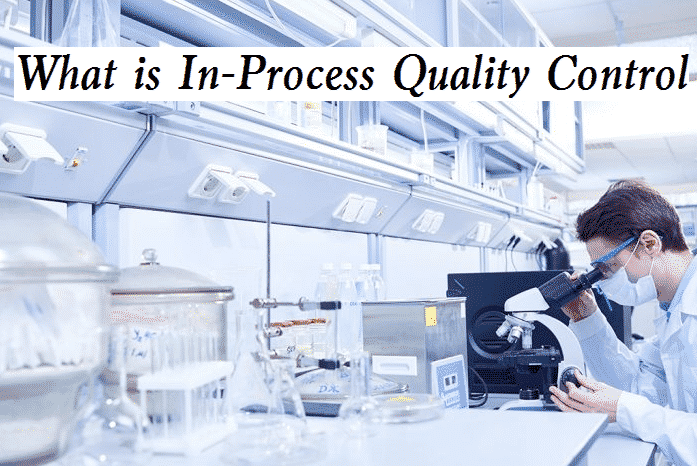Quality control can be divided into in-process quality control (IPQC) and incoming quality control (IQC), in this article, we are going to focus on what is IPQC and what are the key points during IPQC inspection.

What is In-Process Quality Control (IPQC)?
IPQC (In-Process Quality Control) generally refers to the process patrol inspection, which means that in the process of product manufacturing, the patrol method is used to regularly check and confirm whether the process parameters, operation changes, and standards meet the requirements, record the detection status, and carry out necessary control and supervision. Patrol inspection shall be carried out in turn according to the specified items. The manufacturing process refers specifically to the manufacturing process of products.
What Should Be Done in the IPQC Inspection?
The IPQC team must have the strong ability, be able to skillfully know the purpose and problem points of each process and process, and check the process according to the cycle to ensure that the process is controlled. Three points need to be done, including personnel skills, periodic inspection, and on-site regular meetings.
- Personnel skills. Don’t overestimate everyone’s ability. When I do quality, I often go to the line body to ask the inspectors what inspections should be done? There are some things you can’t answer. The skills can be put on paper and then tested to ensure that the skills not given to IPQC meet the requirements.
- Periodic inspection. The key control contents of each process are different. Some processes are automatic processes with a low probability of error. Some processes are manual operations with increased complexity and a high probability of error. IPQC should treat them differently. Different point inspection plans should be formulated for different process-related parameters to ensure that the process parameters are NC.
- Regular on-site meetings. Don’t think that quality is the business of the quality department. Quality is the business of the whole company. The contents of process patrol inspection must organize regular meetings and closed-loop on the same day. The participants in the meeting shall inspect the management personnel, process, and quality of the workshop in time to ensure that the problems in the process inspection can be spot-checked and closed-loop.
First Inspection
1) What is the first inspection
The first inspection refers to the inspection of the first piece (usually 3-5 pieces) before production. Its purpose is to prevent the systematic risk of batch defects (such as poor process, equipment or tooling, incoming materials, and poor operation).
2) Implementation points of the first inspection
- Inspection of the first article before production.
- Especially for processes that are prone to systemic risks such as equipment and tooling, such as flow delay.
- Processes that may produce batch defects, such as automata, etc.
3) Problems in the first inspection
- Only pay attention to products, not to incoming materials and tooling, process, structure, and performance testing.
- The first inspection is qualified, but the first inspection procedure is not completed, and there is no first inspection report, which makes it impossible to trace and analyze the causes in case of problems.
- Failure to report immediately after the first inspection.
3) Risk control of first inspection
- After the first inspection, the first batch of off-line 50-100pcs products shall be tracked and rechecked.
- The first inspection abnormality and the noncooperation of relevant departments shall be reported level by level immediately until the problem is solved.
- If problems are found during patrol inspection, first check the relevant records of the first inspection and recheck in time if necessary.
Patrol Inspection
1) What is a patrol inspection?
Patrol inspection refers to the periodic inspection carried out after the first inspection of the product is qualified, and the inspection is carried out in turn according to the specified items.
2) Key points of patrol inspection
The first inspection must be qualified and the procedure is complete. The key points of patrol inspection are new products, new equipment and tooling, new incoming materials and abnormal incoming materials (such as reviewed materials), new employees, and changes in unstable processes, such as machine repair, material replacement, process change, personnel replacement, equipment commissioning, etc.
3) Problems in patrol inspection
- The abnormality was not solved. The last abnormality was not closed. I forgot to confirm the improvement effect and started production again. For the production with the previous abnormality not solved, the production shall be rejected and reported immediately.
- The real cause of the abnormality is not found, and the source of the defect is still producing defective products.
- Only pay attention to the defects of products, do not pay attention to incoming materials and processes, equipment and tooling management, and maintenance.
- Only pay attention to the defects of the samples taken in the patrol inspection, and do not monitor the defects of the sequence transfer.
- Only pay attention to the defect rate, not the distribution of defects.
- Only focus on key processes, not general processes.
- Insufficient understanding of full inspection station monitoring.
4) Risk control of patrol inspection
- Increase the frequency of key stations and strictly control them. For general stations, the frequency should be normal, and there should be no less.
- Focusing on the monitoring of the full inspection station, tracing the problems of the full inspection station to the specific operation post, tracing the source from the back, and controlling it is the way to get twice the result with half the effort.
- Regularly carry out sampling inspection on the transferred products according to the sampling plan, and it is easy to find problems that can not be found even in the full inspection. It is the best way to effectively cross control sampling risk.
- If any problem is found, the next process must be notified in time, so that the next process can be coordinated and checked. The next process should also be notified in time of temporary changes.